The Victims of Trashmageddon vol.1 – Birds
What is Trashmageddon ?
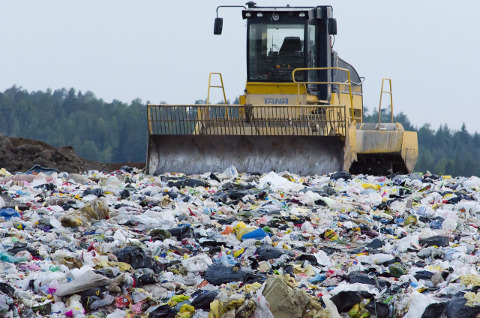
Thrashmageddon incoming
If you are already associating the Trashmageddon to the armageddon you are partly heading in the right direction. If you want to get there, though, instead of imagining huge fiery balls falling from the sky, try to visualize a different scenario by adding a pinch of rubbish to the whole picture. An actual apocalypsis that would bring an end to the Earth is not as painful and miserable as the Trashmageddon that we are now being tortured by.
4.3 pounds of waste per person is generated on a daily basis by approximately 7 billion people. By 2050 it is expected that the world population will increase with up to 50 % and that means the waste production sources will vastly become more powerful.
By 2100 the climate changes due to poor waste management will start wiping everything alive starting with the birds and then moving forward to us. Up to 30% of land-bird species will go extinct if the Trashmageddon scenario is not prevented.
How does the waste threaten the birds?
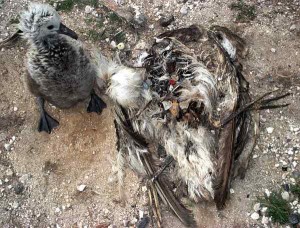 There are multiple ways of rubbish becoming an enemy of all birds. Mainly that would be the greenhouse effect caused by CO2 and other emission such as methane which in time change the face of Earth and make it a more hostile place to anything that lives in it due to the increased atmospheric temperatures.
There are multiple ways of rubbish becoming an enemy of all birds. Mainly that would be the greenhouse effect caused by CO2 and other emission such as methane which in time change the face of Earth and make it a more hostile place to anything that lives in it due to the increased atmospheric temperatures.
CO2 vs Methane?
Both of these come from the waste we produce. However, the methane is said to be a much stronger GHG (greenhouse gas). Luckily it’s only 10% of all the GHG that has been destroying the ozone layer for the last decades.
Waste Incineration of the rubbish is widely used across the globe as a way of producing energy (Sweden is a leader in that). That produces the top two ozone-killers mentioned earlier in huge quantities but the encouraging thing is that this method is not so common because of its high cost.
Landfilling, being the most ordinary waste management practice turns out to be methane’s closest friend in term of emissions. These are 20 times more potent than the CO2 and leave terrible footprint. The good thing is some landfills use the methane for energy instead of leaving it to leak into the atmosphere.
Compostable waste consists mostly of organic junk that is being recycled into compost ( a key ingredient in organic farming used as fertilizer). The bad news are that just an insignificant part of the produced refuse is recyclable because the rest of it gets mixed with something else which turns it into a non-recyclable material. That’s why separating your rubbish at home is a crucial thing, otherwise instead of turning the garbage into something useful it goes to the landfill and impose threat to everything by emitting CO2 and methane into our precious atmosphere (which we mindlessly destroy).
The plastic waste in the ocean
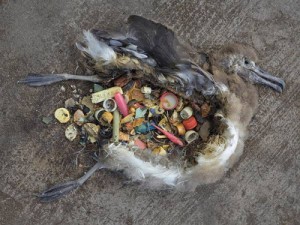
source: Sparkle Motion ; CC license
Sincerely, that is officially the birds’ most effective exterminator. There are 312 seabird species at the moment and their number is getting smaller with every year. Plastics like bottle caps, bags, synthetic clothes and office materials get mistaken by the flying creatures and get swallowed by mistake, mostly because of their bright colour. This prevents the animals from digesting food or stops their breathing and results in their death.
Entanglement isn’t less deadly than plastic junk though. A total of 56 bird species fall victim to entanglement because of fishing nets and monofilament line, produced by fisherman. Wires, strings and fishing hooks also contribute significantly to more blood being spilled from the flying animals.
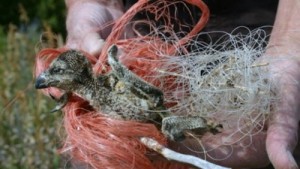
Fishing kills birds as well
In 1960 only 5% of the dead birds had plastic in their stomachs. This statistics is now so horrifying that there is possibility to never look at the wildlife from your old perspective after realising that 80% of the lifeless birds and up to 90% of the perished sea birds have more plastic than guts.
All of us contribute to that by producing various refuse when there are many more convenient and biodegradable materials. Check out this waste statistics for more info on how much is being dumped and see which countries are the most significant sources of it. If you are not eager to comprehend data for rubbish then this very popular article about plastic waste sculptures will surely entertain you and help you reconsider throwing junk in the ocean.
Which bird species are about to get wiped out first?
Basically, all of them are going to be exterminated mercilessly by the Trashmageddon but some of them will take off on their way to the list of extinct species earlier than others. Half of North America’s birds are not adaptive enough to survive the climate changes. The most likely to be consumed by our waste production are:
The American Avocet
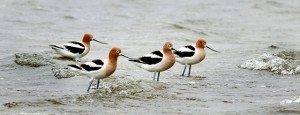
Preserve them, they are so rare
From 40 to 50 cm in length and weighing around 350 grams this is North America’s most probable victim of waste disposal. It is being protected by the Migratory bird treaty act of 1918 but that doesn’t stop the humanity from killing it slowly and painfully.
The Amsterdam Albatross
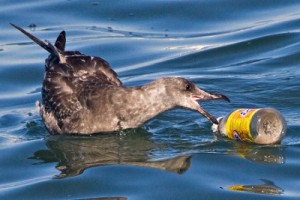
It’s gonna eat it
Non-American Seabird species such as The Amsterdam Albatross is considered to be critically endangered mostly because of the longline fishing. Tourism and fishing are one of the reasons to see tons of plastic in the oceans. The Albatross will not hesitate to munch any bright-looking plastic rubbish thinking it’s food. The list can be endless but that will have a negative effect on you instead of encouraging you to take preventive actions.
Brown-headed Nuthatch
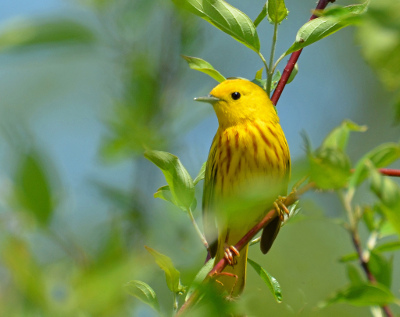
source:
Rodney Campbell ; CC license
This one is mostly seen in US but also rarely spotted in the Bahamas. This cute little warbler is actually a varicolored songbird which voice, unfortunately, will fade away because of the greenhouse gases and human interactions with its natural habitat. Unless you reconsider your rubbish removal approach, its song will be heard for one last time in near future.
Who does anything about stopping the Trashmageddon?
Environment and wildlife preservation organisations are undoubtedly extremely active in their effort to prevent bird species from becoming extinct. The business, mostly rubbish removal services, on the other side, are giving their best to promote waste management campaigns and raise awareness about rubbish removal techniques that can improve the troubling statistics we constantly see. It’s up to all of you how you’ll change your behaviour after reading posts like this. And remember, the more you are concerned of the overwhelming power of the Trashmageddon the less birds species will become extinct.
